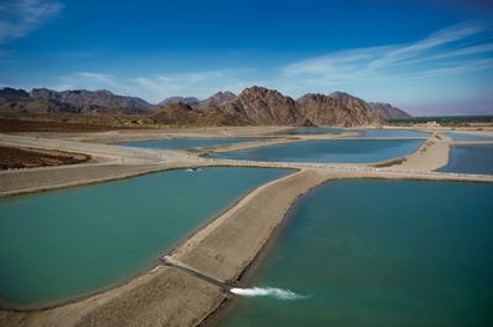A recent report by the U.S. Geological Survey (USGS) shows that efforts by Coachella Valley Water District (CVWD) to replenish local aquifers in the Coachella Valley have been effective, leading to stable land surface elevations in most of the Coachella Valley. Areas with land subsidence identified in prior studies are now stable, uplifting, or experiencing substantial slowing of subsidence. CVWD partners with Coachella Water Authority, Desert Water Agency, Indio Water Authority, and Mission Springs Water District to manage groundwater in the Coachella Valley.
“The study shows that CVWD’s commitment to these partnerships and the sustainability of the aquifer that supplies most of our drinking water is a success story,” said Jim Barrett, General Manager of CVWD. “The results clearly demonstrate a reversal in trends of groundwater-level declines during previous decades. This is good news for the long-term health of the aquifers.”
The USGS report identified three initiatives by CVWD that have been most effective in improving groundwater conditions in some of the historically most overdrafted areas of the valley. The initiatives are providing Colorado River water through the Mid-Valley Pipeline project since 2006 to reduce groundwater pumping; budget-based, tiered water rates in place since 2009 that have contributed to conservation; and aquifer replenishment at the Thomas E. Levy Groundwater Replenishment Facility since 2009. CVWD began importing water to the Coachella Valley in 1949 to help reduce groundwater pumping.
To collect data for the study, Global Positioning System (GPS) surveying and interferometric synthetic aperture radar (InSAR) methods were used to analyze the vertical land-surface changes in the Coachella Valley. The study found that water levels in wells throughout the valley showed longer-term stability or rising groundwater levels since about 2010. These results mark a reversal in trends of groundwater-level declines during the preceding decades.
CVWD and the USGS have been investigating subsidence since 1996 in response to concerns that pumping of groundwater was leading to groundwater-level declines that also could trigger land subsidence. In addition to supplying drinking water, groundwater has been a major source of water for agricultural, recreational and municipal use in the Coachella Valley since the early 1920s.
The full report, Detection and Measurement of Land Subsidence and Uplift Using Global Positioning System Surveys and Interferometric Synthetic Aperture Radar, Coachella Valley, California, 2010–17, can be viewed at https://pubs.er.usgs.gov/publication/sir20205093




